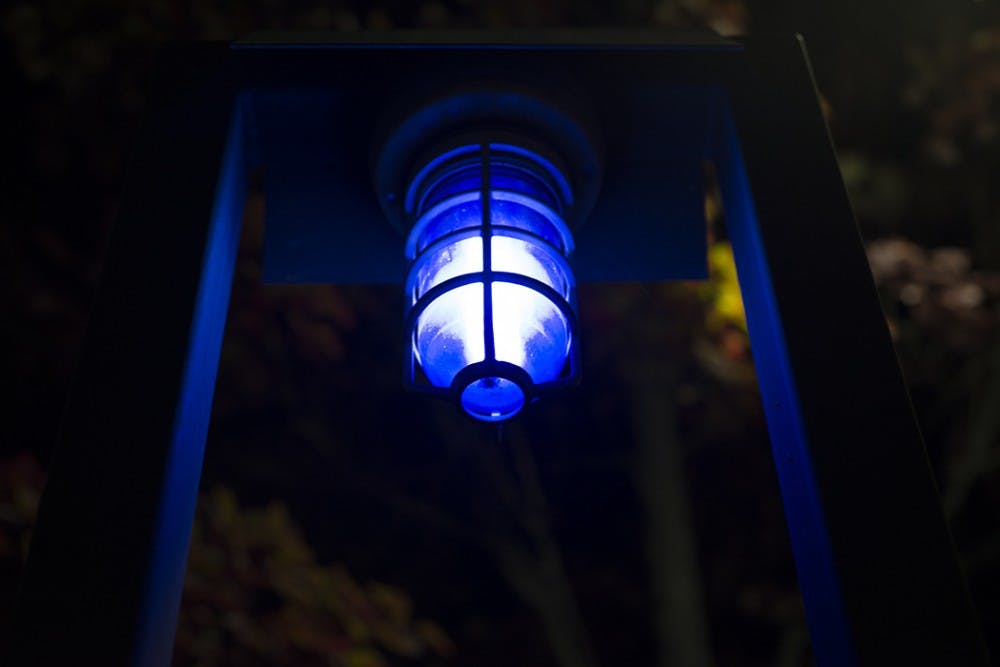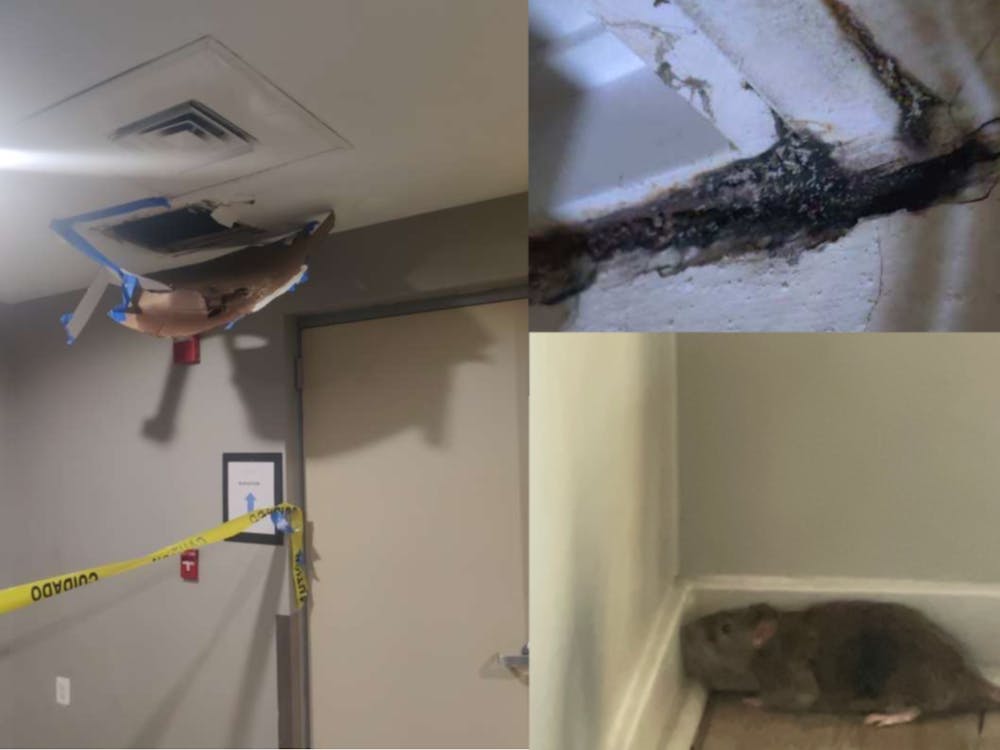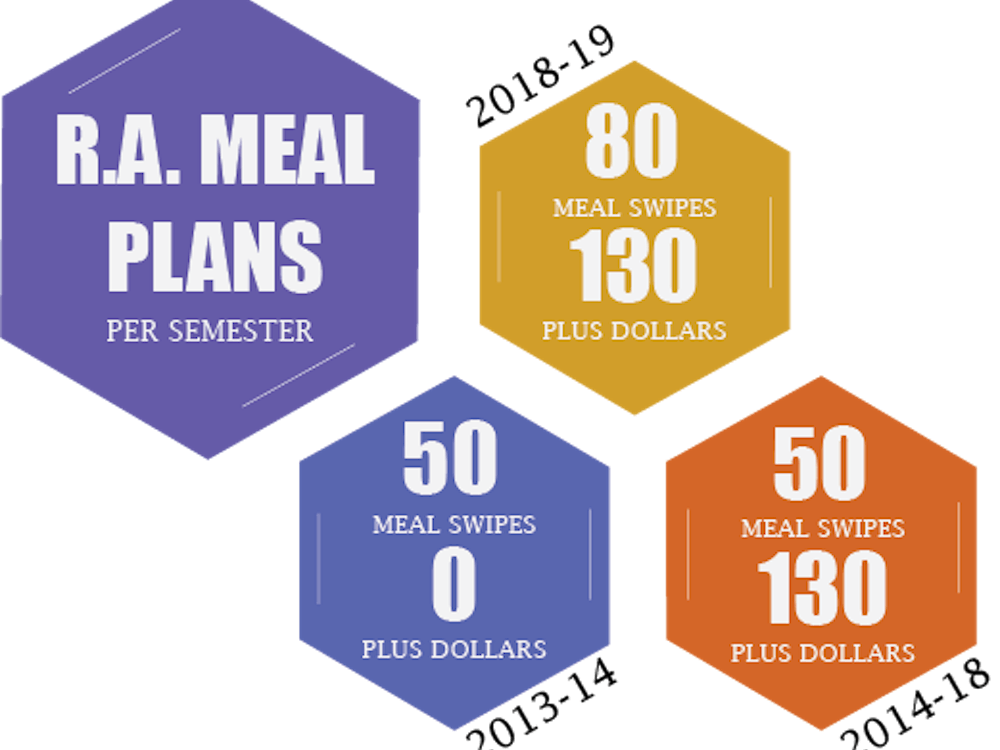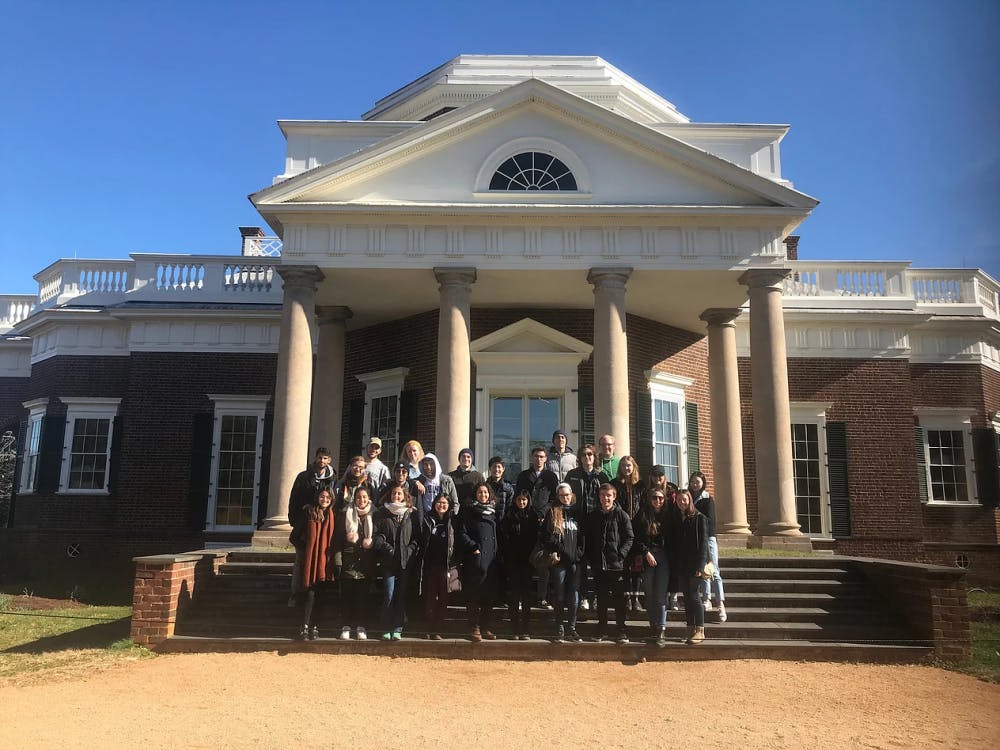The University’s “blue light” emergency phones were first installed 30 years ago, though they are still used and installed today. Long before cell phones, the blue lights served as a direct connection to the University Police Department. However, with the rise of cell phones, the tall blue towers have been used less frequently. Additionally, many students today do not fully understand the function of the lights and how to use them.
What are blue lights?
Blue lights are emergency phones on Grounds and in the surrounding area that directly connect University students, faculty and visitors with UPD. The 478 phones appear in two forms: outdoor blue light towers and indoor wall telephones.
Ben Rexrode, community service and crime prevention coordinator for UPD, said many University students believe blue lights are only supposed to be used in dire emergencies, but the system can also be used to ask for a safe ride, get medical attention or report a crime.
“[The blue light system is] a two-way communication with our police department 24 hours a day, seven days a week,” Rexrode said. “It’s a way to have easy, instant access to the police department anywhere on Grounds.”
The blue light emergency phones are simple to use. If outdoors, a student presses the large red button and is connected with the UPD front desk. On the newer phones, the blue light at the top of the tower will begin to blink. In a severe situation, a police officer will usually be at the location within a minute or two. If a student is off Grounds, pressing the button immediately calls 911.
Some University students believe the blue light system is important in providing a sense of safety and comfort. Third-year Batten student Henry Pollock, a member of the University Security and General Safety Committee, said even when the system is not being used, it provides a sense of security for most students.
“There’s a two-fold purpose of those blue lights,” Pollock said. “One is in the actual emergency situation to provide an outlet. Second … is the feeling of safety and comfort they help provide.”
The blue lights are located in high-traffic areas and more isolated areas like in parking garages, behind buildings or on less-traveled walkways. Rexrode said he believes the phones act as an extra layer of crime prevention that students take comfort in.
“They do serve that safety purpose, that easy accessibility to police anywhere on Grounds, but it is also a sense of security,” Rexrode said. “Even though I have my cellphone … just seeing that there, I know I could still get in touch with police if I had to.”
The Office of Safety and Emergency Preparedness catalogues and manages the emergency phone system. University Police officers frequently check to make sure the phones are working. Facilities Management and Information Technology Services also work with OSEP to maintain the lights.
The emergency phones can also be used in situations where students feel like they cannot talk. Since the UPD can track which phones are pressed, students can leave a trail of breadcrumbs if they believe they are being followed or if they feel insecure.
“Students may come from lots of different areas across the country where you don’t call police unless it’s an absolute emergency, where for us, it’s a little bit different in that we want to be contacted, whether by e-phone or calling 911 just for when something doesn’t seem right,” Rexrode said.
Concerns with the system
Blue lights have been around for years, but some students still do not know their purpose. First-year College student Urja Jariwala said many first-years in particular do not understand how the lights work.
“Everyone knows about 911, people know about CAPS, many people know about SafeRide, but I don’t think many people know about blue lights,” Jariwala said.
OSEP created a booklet this year explaining the safety resources students have on and off Grounds. OSEP Assistant Director John Flood said informing students of the safety initiatives on Grounds is often difficult.
“I think getting the word out is always the hardest thing,” Flood said. “There are so many ways to communicate, so many ways to get the word out, but how many students don’t know about these things?”
Although the new booklet was given to first-years, older students cannot access the information as easily. The booklet is online, but students must know it exists in order to look for it.
Fourth-year College student Ben Webel, chair of Student Council’s safety and wellness committee, said he and his co-chair, third-year College student Madalyn Kimlick, work to increase awareness of safety initiatives already in place on Grounds, like the blue lights.
“There are a lot of really cool things in place already for students that they just don’t know about,” Webel said. “A lot of things have been around for a while and people just don’t know about them or they forget that [they are] helpful.”
Since some blue light calls are transferred to 911, UPD does not keep a log of all service requests. However, Rexrode said the emergency phones have been used a lot less in recent years. Now, with the popularity of cell phones, students often call the police on their phones instead. However, the phones have continued to be installed around Grounds.
“Even if they’re not used as often, they are still used,” Rexrode said. “They are still a resource, I mean literally, a standing resource that somebody could contact us through one of them.”
Since the blue lights have been in place for so long, students sometimes jokingly press the emergency call buttons — a frustrating act for Rexrode, since a police officer has to investigate the scene. On Friday or Saturday nights, Rexrode said these pranks can prevent police officers from doing their jobs effectively.
“We’re going to get out of our cars, look in the area, see if we hear anything, look to see if everything is okay,” Rexrode said. “It doesn’t seem like a big deal, but it’s actually a big deal because we’re taking almost half of our manpower just to go address this.”
Should U.Va. keep them?
Some universities, like the University of California, Davis, and New Mexico State University, have begun to tear out their blue light systems — something the University decided not to do when the question came up in 2014. Flood said the potential benefits of the lights outweigh their small maintenance cost.
“If it helps one person, then it’s worth it,” Flood said. “What if that one person needs help for whatever reason and there isn’t a blue phone near them?”
Others, like Pollock, believe safety initiatives like the ambassadors offer more security and are used more often.
“While these blue lights in an ideal situation work perfectly, there’s a chance … you may not be able to get to a blue light in time to signal for help,” Pollock said.
Now that the system has been installed, Rexrode said it would be a hard sell to rip the lights out. Although used significantly less than they were in the past, the lights are still utilized to contact the police. The lights continue to be installed, but at a slower rate than they were 20 years ago.
While the lights may not be the most important layer of safety at the University, Pollock said he believes the lights should not be taken out unless they are providing a measurable financial burden.
“Knowing that they do create a palpable sense of safety among a lot of individuals on Grounds,” Pollock said, “I think that until I see a specific cost figure that is making a measurable negative financial impact on the University — something that you could compare in a way to the positive effect it has on people’s feelings of safety — I think that they’re helping and should continue to be operated.”
Just a layer
The blue light system is only one part of the University’s security. Claire Kaplan, director of gender violence and social change at the Women’s Center, said the blue light system is actually part of a much larger system of safety for University students.
“Good prevention strategy at an institution like a university has to have many, many different levels to it,” Kaplan said.
Flood said OSEP works to provide many layers of resources for students in case one fails or is inaccessible after an incident.
“The blue light system is a redundancy,” Flood said. “When you look at the emergency notification system across Grounds, it’s multilayered. We’ve had the discussion here at U.Va. about removing the phones, but it always come down to the ‘What if?’”
For instance, Flood asked what would happen if a student did not have their cell phone with them or if the University phone system crashed. Even if University phones lines go down, the emergency phones rely on a different type of service and would continue working.
Rexrode, Flood and Kaplan all said the first and most important step for student safety is staying informed. Kaplan works with many different organizations on Grounds to ensure that safety measures and prevention techniques are taught in ways which resonate with different people, such as posters and academic courses.
“[The blue light system] is just a tool,” Kaplan said. “Let’s work on the other things that will create cultural change.”
Webel emphasized the importance of an active bystander community, which he said he believes surpasses the effectiveness of blue lights.
“We really want to encourage a community of people looking out for each other because these blue lights will only be doing so much,” Webel said. “While we have seen blue lights used, I don’t think [they are] a replacement for the reciprocity of two people looking out for each other.”





